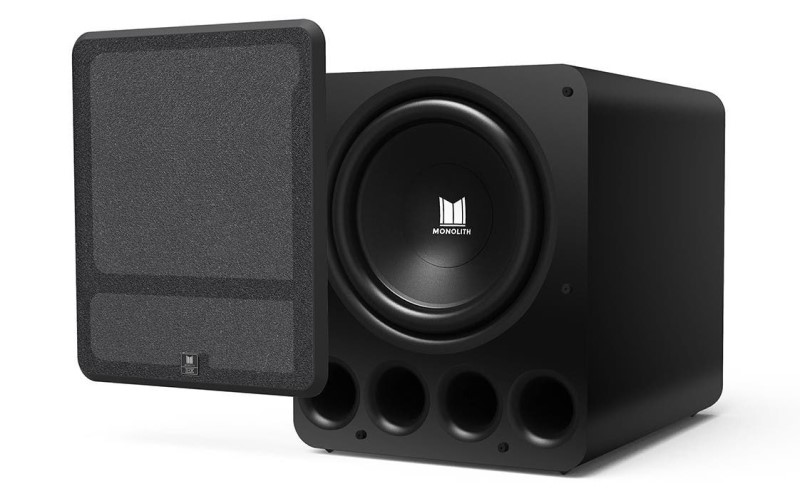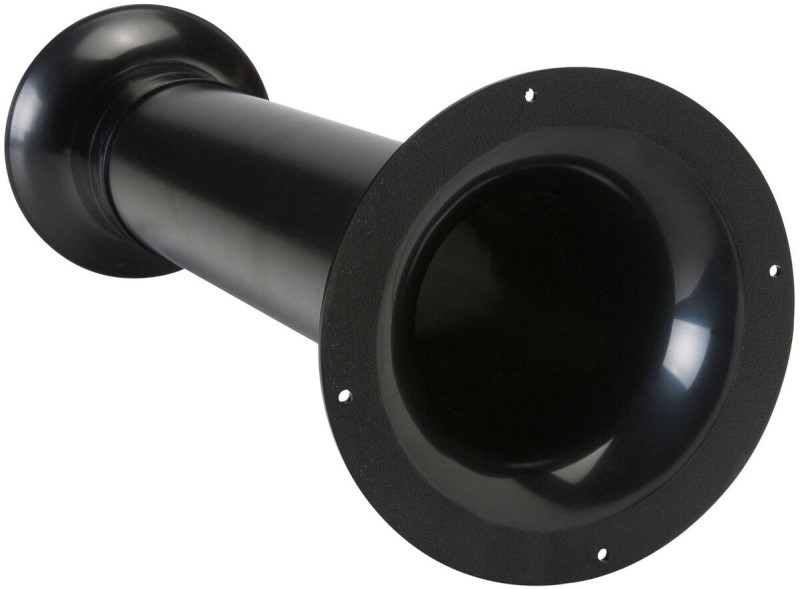The Case Against Port Plugs
If you are on the market for a subwoofer, you’ve learned that they come in two flavors – sealed and ported. A sealed subwoofer is an enclosed box with a driver. A ported subwoofer has holes that allow air to travel in and out of the enclosure. The general advice is that sealed subs are better for music, ported subs are better for movies. That, of course, is malarky. But to make people feel better, ported subwoofers are sometimes sold with port plugs. You can use these to block the ports (some or all) and turn a ported sub into a sealed one (or just a less ported one). We don’t think this is a great idea. Here is our case against port plugs.
Sealing Subs or Speakers Changes Their Performance
In general, a ported speaker or subwoofer will play louder but its performance drops off fairly quickly at a certain point (the point below the tuning of the port). A sealed subwoofer’s performance will drop off more gradually, but it will not play as loud as its ported cousin. By offering port plugs, manufacturers can show a graph that has a line that gradually drops off but seems to go lower into the subsonic range (under 20Hz) than the line of the graph with all of the ports open. They’ll call blocking some or all the ports “extended mode” or some such. They’ll often have a switch on the back on the amplifier that will adjust the amplifier EQ to adjust for the plugged ports.

The problem is that you bought the big subwoofer with the ports because you have a large room and need a bunch of output to fill it with bass. When you plug some or all of the ports (and put it in extended mode), you’ve perhaps lowered the extension, but you’ve also lowered the output. So, what do you do? You turn it up! You maybe use your room correction to boost the bass in the frequencies you can actually hear (those above 20Hz). Now, your subwoofer is making a strange clanging sound. What is it? Your driver bottoming out. All because you decided to try out sealing some or all of your ports with port plugs.
Are port plugs inherently bad? Not really. Especially if you know what you are doing. But most people get advice on what subwoofer to buy for their room, buy it, and then see the “extended mode” option. Why wouldn’t they want extended mode? Well, for the reasons outlined above. But most people don’t realize what plugging ports can do to your subwoofer. Will you definitely damage your subwoofer? No. We’ve rarely seen it happen. But it can happen. And that’s enough for us.
Port Plugs Can Make Noise
Subwoofers aren’t the only speakers that can come with port plugs. When they do, near-wall placement is often the given reason. If you have a speaker near a wall (or a center channel in a cabinet), the added bass from the speaker can become boomy because of boundary reinforcement. The real solution is to add absorption to the wall near the speaker, but speaker manufacturers can’t sell you that. They can tell you that a port plug will help.
It might. We’re not going to say it won’t. But what it can also do is add noise.
Many port plugs are simple foam. Even though they seem like they are in securely, any little gap can allow air to pass through. Just like pursing your lips and blowing, this can cause your speaker to whistle. The solution? Push them in further. But that leads to a different problem.
Have Fun Removing Them
If your speakers came with port plugs, they should have included some sort of system for easily removing them. “Should have” is the important phrase. Most manufacturers simply include foam plugs (like the ones at the top of this article). It is very easy to shove these foam plugs so far inside your port that getting them out is near impossible.

If you’ve decided to test out plugging your ports and have taken the online advice about using rolled-up socks…well, good luck. We suggest small tongs, thin pieces of plastic to wedge between the plug and the port, and a lot of patience.
When Using Port Plugs Makes Sense
So port plugs should never be used? Not at all! You just need to be careful when and for what reason. We are of the opinion that blocking some of the ports with plugs is just for marketing, especially with subwoofers. It shows a graph that is flat down to a lower frequency. What that graph doesn’t tell you is how much output (volume) the subwoofer lost.
But what if you no longer need the output? What if you bought a subwoofer for a very large room but your situation has changed? What if your room was once open to the rest of the house but you’ve installed a door making the volume of air much smaller? Would plugging all or some of the ports make sense? Absolutely!


If you are getting reference level output with your subwoofer volume knob well under the 50% mark, you’ve got tons of headroom. That’s output that is literally never seeing use. Go ahead and put your subwoofer into extended mode and enjoy the lower extension.
It just doesn’t make sense to buy the larger, ported subwoofer with the intention of sealing it. Buy the sealed subwoofer that is physically smaller, easier to place, and is appropriate for your room size.
For speakers, you should just about never use port plugs without speaking with the manufacturer first. They’ll know if you’ll risk damaging your speaker. Generally, however, with careful placement, room treatments, and a little EQ, port plugs should rarely be needed.
Wrap Up
We don’t have any problems with ported or sealed speakers or subwoofers. Port plugs are fine to use, especially when they are provided by the manufacturer. We just question why you should want to. If you know where you are going to place your speakers or subwoofer, you can get the appropriate style (ported or sealed). Why buy a large subwoofer or speaker and then limit its output with a port plug? Buy a sealed subwoofer or speaker from the get-go. If you do decide to use port plugs with your speakers, just be sure to enable any special EQ modes (usually in the form of a switch on the back of the speaker). This will protect your speaker from damage.



Great article and I agree with everything – except for frequencies below 20 Hz being subsonic! I believe the correct term is infrasonic (below the range of human hearing) vs. subsonic (below the speed of sound.)
But I have to agree that when talking about sounds from a subwoofer, “subsonic” definitely feels like it should be the correct term, even if it’s not.
Keep up the great work!
I have been using subsonic wrong for a long time now apparently. Thank you for the correction.
You are correct! I have also used that term incorrectly, but no longer! Thanks for the comment and info!
Such a disservice, but always good for a laugh when a doofus pretends to be an authority. Just additional proof that a small amount of knowledge can be dangerous. Get some education based in fact; you’ll be glad you did. So will your readers.